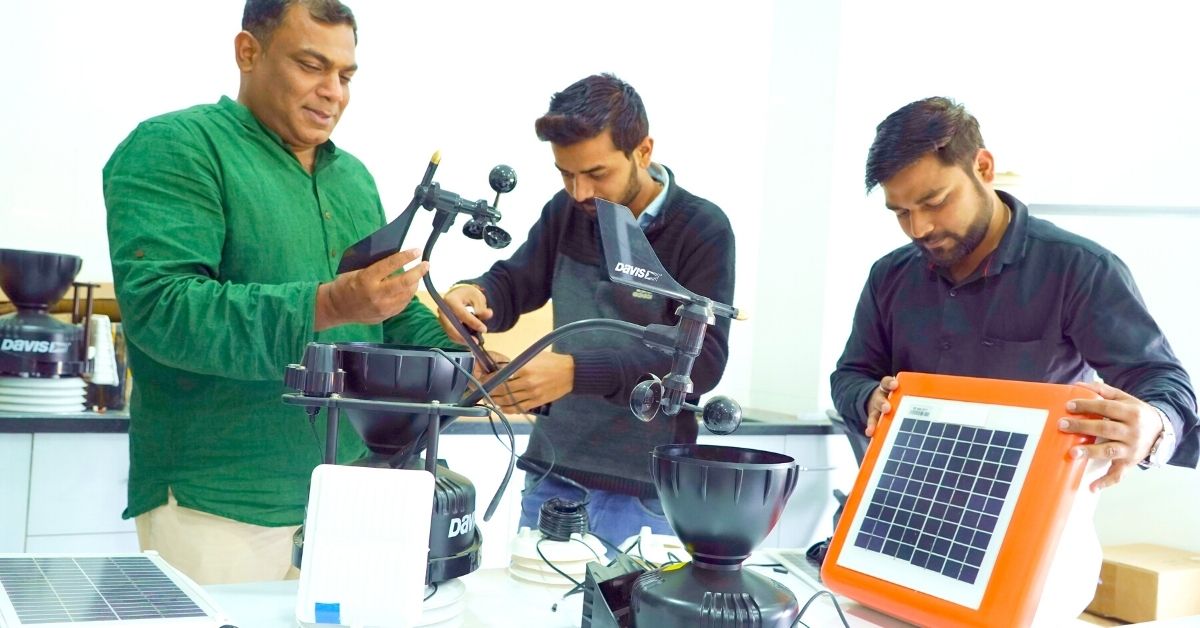Extreme weather conditions such as hailstorms, heavy rains, floods and droughts are impacting Indian agriculture heavily, and have cost the industry losses worth millions of rupees. .
While nature’s fury is beyond humanity’s control, farmers can benefit by reducing losses if they are given warning signs to brace for rough weather accordingly.
A former scientist from Maharashtra, working at NASA (National Aeronautics and Space Administration) is taking concerted efforts for the cause precisely.
In 2003, Dr Parag Narvekar (43), a native of Nashik, completed his post-graduation, specialising in image processing technology, from IIT Bombay. He joined NASA to develop new Earth observing satellite technology and data processing solutions.
Dr Parag tells The Better India, “Data collected by using satellites via sensors needs decoding. Beyond its primary data gathering, it can present ancillary information such as topography, soil type, vegetation, moisture and other parameters.”

Dr Parag says that this data has immense potential to benefit agriculture. Hence, in 2016, he decided to return to his roots and help farmers. “Farmers are the foundation of any economy, and if the community can be supported and made resilient, it will help the country prosper,” he adds.
He used his skills, knowledge and network to collaborate with a team of scientists at NASA, IIT-Bombay, Indian Space Research Organisation (ISRO), Indian Institute of Science (IISc, Bengaluru), the European Space Agency and the Japan Aerospace Exploration Agency (JAXA). He constructed a low-cost weather station that offers crucial information to farmers.
Making satellite data accessible to farmers
In 2017, Dr Parag launched his company, Sensartics Pvt Ltd, to offer three models of a weather station that will assist farmers in various aspects of agriculture. He collaborated with Sahyadri Farms, a Farmer Producer Company working with farmers on the ground.
Parag explains that the sensors in these devices help monitor soil, canopy, humidity, and leaf moisture, as well as diagnose early stages of diseases. The farmer receives an alert to intervene and take necessary action.
“The weather station provides advanced information on aspects such as water management, cold wave, nutrient management, wind direction, photosynthesis and plant transpiration. The advanced version can cover a radius of 5 km and can be used by a group of farmers together,” he says, adding that the information can be accessed and monitored on a smartphone via an app.
The company offers three models in weather stations, namely, Scalar station, Tracer station and Master station. They cost between Rs 10,000 and Rs 60,000.
“The other weather stations in the market range from Rs 25,000 to Rs 2.5 lakh. However, ours are more efficient and cost far less, making it affordable to marginal farmers,” Dr Parag says.
Ganesh Kadam, a farmer from the Mohadi area near Nashik, says, “I have been using the weather station since 2018, and it has helped me save water and track soil moisture levels. It also gives timely warnings about diseases such as downy, powdery mildew, taxa and thrips.”

He adds, “During extreme rain in February 2020, the weather station predicted that my grape vineyard would see less losses than what had been anticipated. During the night, the fruits would become cold, and the morning sunlight would then cause them to crack due to the extreme heat difference. This would lead to the fruits getting spoiled. Usually, I’d spray chemicals on them as a precautionary measure. But the app told me that the temperature would not rise the next day.”
Ganesh says this prediction was accurate, and that it prevented him from spraying massive amounts of chemicals on his grapes unnecessarily. “I saved cost and time, as well as the immense quantity of chemicals that would have gone on the crops,” he adds.
Dr Parag says that over 40 farmers are already benefiting from the weather stations, and an additional 250 have booked their orders.
“India has rich weather and biodiversity. The climatic conditions are favourable. If the farmers have access to the appropriate technical support for precision farming, it can bring revolution in the agriculture sector,” Dr Parag notes.
Edited by Divya Sethu
No comments:
Post a Comment